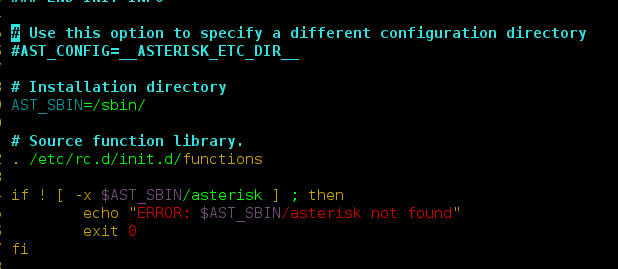log4j is a Java-based logging utility. It is used to output log statements from applications to various output targets. log4j is designed to be flexible and extensible, allowing developers to specify the output format and levels and control which log statements are output. log4j is part of the Apache Logging Services Project, which aims to provide a set of open-source, reliable logging utilities for use in various applications. It is widely used in Java-based applications and is a popular choice for logging due to its flexibility and performance. To use log4j in a Java application, you need to include the log4j library in your project and configure a log4j configuration file that specifies the logging settings for your application. You can then use the log4j API to output log statements from your code.
Why Apache Log4j?
- To track the flow of applications and to maintain a record of the overall process we go for the Log4j framework.
- Highly configurable
- Logging is highly flexible and could be set to various levels.
- Loggin information could be sent to a wide variety of destinations like-database, files, consoles, and Unisys Log
How to use log4j in a Java application?
Here is an example of how to use log4j in a Java application:
Java
import org.apache.log4j.Logger;public class MyClass { private static final Logger logger = Logger.getLogger(MyClass.class); public void doSomething() { logger.debug("Doing something"); // ... logger.info("Did something"); }} |
In this example, the ‘debug’ and ‘info’ messages will be logged using the log4j framework. The log4j configuration will determine where these messages are output (e.g. to the console, to a file, etc).
Log4j Main Components
- Loggers: Loggers are responsible for capturing log messages and forwarding them to the appropriate output target (e.g. console, file). You can obtain a logger for a given class using the Logger.getLogger(Class) method.
- Appenders: Appenders are responsible for writing log messages to the desired output target. log4j comes with a variety of appenders for different output targets, such as the ConsoleAppender (for writing to the console) and the FileAppender (for writing to a file).
- Layouts: Layouts are responsible for formatting log messages in a specific way before they are output. For example, you can use a layout to specify that log messages should be output in a certain format (e.g. with a timestamp and the log level).
- Logging levels: log4j allows you to specify the “level” of a log message, which indicates its importance. The levels, in order of increasing importance, are TRACE, DEBUG, INFO, WARN, ERROR, and FATAL.
- Filters: Filters allow you to control which log messages are output based on certain criteria. For example, you can use a filter to only output log messages with a certain logging level (e.g. ERROR).
- Object Renderer: provides string representation of the login information.
- Log MAnager: reads the configuration parameters.
Advantages of using log4j
- It is fast and efficient. log4j is designed to have a minimal impact on the performance of your application, even when logging at high volumes.
- It is flexible. log4j allows you to output log messages to various targets (e.g. console, file, database), and provides a number of appenders for different output destinations. You can also use layouts to customize the format of your log messages.
- It is well-documented and widely used. log4j has comprehensive documentation and a large user base, so you can find many resources and examples online to help you get started.
Disadvantages of using log4j
- It can be complex to set up and configure. log4j has many different options and features, which can make it intimidating for new users.
- It does not provide many advanced features out of the box. For example, log4j does not have built-in support for distributed tracing or analytics. If you need these types of features, you may need to use additional tools or libraries.
- It has been succeeded by log4j2, which is a more modern and feature-rich logging library. If you are starting a new project, you may want to consider using log4j2 instead of log4j.
Configure Log4j
Java
// Define the root logger with appender Xlog4j.rootLogger=DEBUG,X// Set the appender named X to be a File appenderlog4j.appender.X=org.apache.log4j.FileAppender// Define the layout for X appenderlog4j.appender.X.layout=org.apache.log4j.PatternLayoutlog4j.appender.X.layout.conversionPattern=%m%n |
There are several ways to configure log4j, depending on your needs and preferences. Here are some common approaches:
XML file: You can use an XML file to specify log4j configuration settings. Here is an example XML file that does the same thing as the properties file above:
XML
<?xml version="1.0" encoding="UTF-8"?><Configuration> <Appenders> <Console name="Console"> <PatternLayout pattern="%d{yyyy-MM-dd HH:mm:ss} %-5p %c{1}:%L - %m%n" /> </console> </Appenders> <Loggers> <Root level="info"> <AppenderRef ref="console" /> </Root> </Loggers></Configuration> |
Code: You can also configure log4j programmatically, by using the log4j API to set up appenders and loggers. Here is an example of how you might do this:
Java
import org.apache.log4j.Console.ConsoleAppender;import org.apache.log4j.Layout;import org.apache.log4j.Level;import org.apache.log4j.Logger;import org.apache.log4j.PatternLayout;public class MyClass { public static void main(String[] args) { Layout layout = new PatternLayout( "%d{yyyy-MM-dd HH:mm:ss} %-5p %c{1}:%L - %m%n"); ConsoleAppender consoleAppender = new ConsoleAppender(layout); Logger rootLogger = Logger.getRootLogger(); rootLogger.setLevel(Level.INFO); rootLogger.addAppender(consoleAppender); }} |
Python3
import logging# Create a loggerlogger = logging.getLogger('my_logger')logger.setLevel(logging.DEBUG)# Create a file handlerfh = logging.FileHandler('my_app.log')fh.setLevel(logging.DEBUG)# Create a console handlerch = logging.StreamHandler()ch.setLevel(logging.ERROR)# Create a formatterformatter = logging.Formatter('%(asctime)s - %(name)s - %(levelname)s - %(message)s')# Add the formatter to the handlersfh.setFormatter(formatter)ch.setFormatter(formatter)# Add the handlers to the loggerlogger.addHandler(fh)logger.addHandler(ch) |




